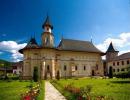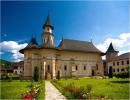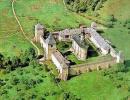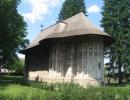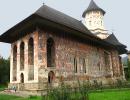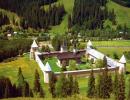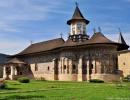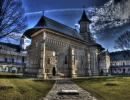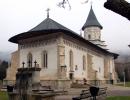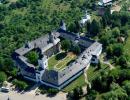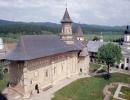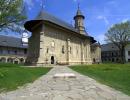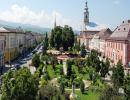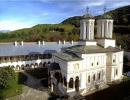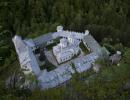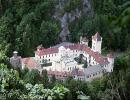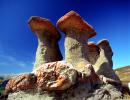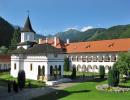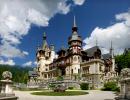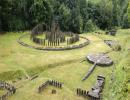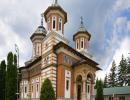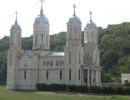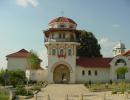Bucovina Monasteries, located in Moldova, the Northeastern of Romania: Voronet, Gura Humorului, Sucevita, Moldovita, Dragomirna, Putna, etc, part of UNESCO World Heritage
Among the most picturesque treasures of Romania are the Painted Monasteries of Bucovina. Their painted exterior walls are decorated with elaborate 15th and 16th century frescoes featuring portraits of saints and prophets, scenes from the life of Jesus, images of angels and demons, and heaven and hell. Deemed masterpieces of Byzantine art, these churches are one-of-a-kind architectural sites in Europe.
Neamt Monasteries, located also in Moldavia: Agapia, Varatec, Neamt, Durau, Bistrita.
These monasteries are located near some very special medieval citadels.They are impressive by the number of beautiful icons and special religious art objects: manuscripts, old prints, fabrics.
Maramures Wooden Churches, located also in the North of Romania: Barsana, Ieud Hill, Iza Valley and visit Sighetul Marmatiei with genuine traditions and the village of Sapanta, world famous for it's "Merry Cemetery", where each wooden cross carried funny epitaph about the person's life.
Monasteries from the North of Oltenia, located in the South of Romania: Hurezi, Polovragi, One Wood Monastery, Tismana, representing the authentic romanian architectural style, developed by the last romanian prince at the end of 17th century, Constantin Brancoveanu.
These monasteries are located near the city Targu Jiu, with the most represetive outside sculptures of Constantin Brancusi. He is considered to be a pioneer of modernism, a visionar, one of the most influential sculptors of the 20th-century, named the patriarch of modern sculpture.
Another significant tour could be one in which we can visit the Carpathian Sphinx, in Bucegi Mountains, an impressive megalithic structure, The beautiful Peles Castle, Sinaia Monastery, Sambata de Sus Monastery, The Sinca Veche Cave, an ancient place of worship, known as the Temple of Fates, dated more then 7000 years old. The monastery carved in stone is perfectly integrated into the natural landscape and is supposed to be a pre-christian settlement. Ending the tour with Sarmizegetusa, the most important, religious and political center of the Dacians. In ancient Sanskrit the name means flow, enlightenment and the place that illuminates the world of life. Explore architectural wonders such as the 365,242197 day calendar, the solar disc, the colonnade, and much more.
The Danube Delta and Dobrogea Monasteries: The Church Cave of Saint Andrew the Apostle, named The Bethlehem of romanian people, Dervent Monastery, where the Christians come in pilgrimage to pray to the icon of the Virgin Mary, the miracle worker and to the Holly Crosses.
Experience life in Transylvanian Mansions
More details can be found on http://www.centruleda.ro/en/travels/transylvania-at-a-glance/260-discover-the-authentic-transylvania-and-its-medieval-cities-2



